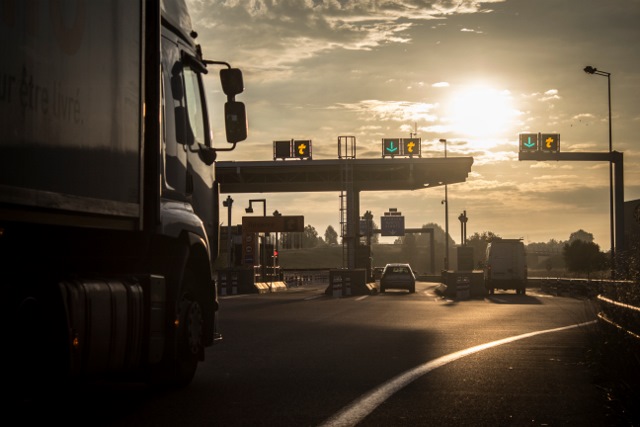What are the changes in tolls in Europe?
There will be changes in tolls in Europe over the next few years. The CO2 emission class of vehicles is now starting to be taken into account in toll systems, which until now have been calculated on the basis of factors such as infrastructure maintenance costs or fair competition in the market. The transition towards more sustainable freight mobility in Europe has triggered the first changes in tolls, price increases that particularly affect heavy goods vehicles and therefore hauliers and international transport companies.
European tolls change their rates
Environmental awareness and the move towards more sustainable mobility already affect the setting of toll rate modifications. With the new EU Eurovignette Directive, the way road users are charged forroad infrastructure is changing forever.
Why are toll systems changing in Europe?
Toll prices vary according to many factors and each country has its own system, which is why, when crossing the border, it is a fundamental aspect that transport companies have to take into account. These modifications are usually updated annually, they may be conditional on a timetable and affect heavy goods vehicles in different ways.
This is the case in Germany or Austria, for example: the toll system of the former applies mainly to trucks of at least 7.5 tonnes, while in Austria tolls depend on the time of day. It is indeed these two countries which are the first to announce and implement new toll developments. And, by means of tolls, 2024 will in fact be be characterised by the application of a surcharge on the most polluting heavy goods vehicles. The objective with the change of tolls in Europe is to promote the use of low or zero emission vehicles, or alternative fuels, in line with the Paris Agreement.
Developments in the German and Austrian toll systems
The changes in tolls in Central Europe, as mentioned above, already affect all motorways and national roads in Germany, which was the first country to modify the calculation of its prices by basing them on emissions. In the case of German tolls in 2023, a toll increase was implemented which substantially affected HGV drivers. It is estimated that each vehicle pays a surcharge of approximately 200 euros per tonne of CO2 emitted when crossing Germany. This inclusion has in some cases made fares more than 30% more expensive.
Austria, the neighbouring country, has taken a little more time in the implementation of changes to its toll system: from 1 January 2024 its tolls take into account factors such as distance travelled, axle configuration, Euro emission class and CO2 performance. The measure has particularly affected vehicles operating on motorways and dual carriageways which have a maximum authorised mass of more than 3.5 tonnes, such as lorries, buses and heavy motorhomes. Here you can find the table of tolls 2024 in Austria compiled by FROET.
It is also worth noting that, as of January 2024, part of the Belgian motorways have also been subject to an increase in the kilometre charge system.
Hungary also changes its toll system in 2024
In Hungary there have been changes to the toll system since January 2024 that have also affected the international freight transport sector in the country.
The new Hungarian toll pricing policy includes the frequency of use, the CO2 emission rate – in nine different categories – and the costs related to air and noise pollution – in this case, based on toll sections. The changes also include an extension of the toll network to include the M0 motorway, a new axle category “J5” (heavy goods vehicles with 5 or more axles) and a charge for the external costs of air pollution, noise and CO2 emissions caused by traffic.
Thus, changes in tolls in Hungary have increased by an average of around 30%. In addition, it will no longer be possible to make toll payments in cash. In other Eastern European countries such as Poland, tolls have also recently been adjusted, albeit at a lower cost. In this case, the increase is about 13.2%.
Denmark plans changes to its toll system from 2025 onwards
Denmark is also joining the drive to make transport greener and is focusing on trucks over 12 tonnes. From January 2025, the Nordic country will introduce a new truck toll based on emissions calculations and kilometres travelled on state roads and parts of the municipal road network. In 2027, the same system is planned to come into force for vehicles of 3.5 tonnes and above. The toll will apply to the entire Danish public road network from 1 January 2028
The Danish government’s target is to achieve a reduction of 0.3 million tonnes in CO2 emissions by 2025, and one of 0.4 million tonnes by 2030.
European toll planned in Spain to combat CO2 emissions
On French motorways, toll costs will increase by an average of 3% on all networks and in Belgium a new zero cents per kilometre category has been established for zero emissions vehicles in Flanders. In the Iberian Peninsula, a growth in costs has also been noted, with toll rate increases in Spain ranging from 5% to 6.65%, while in Portugal an increase ranging from 1.90% to 2.1% has been observed.
In terms of emissions, it is worth noting that the toll system in Spain is not following the same path, although changes are expected. The Spanish government and Brussels agreed not to introduce tolls in 2024, in exchange for a commitment to look for other alternatives, such as boosting rail freight transport. But it seems that there are mixed feelings with regard the measure to reduce emissions from large forms of transport in Spain, and changes could be on the way.
According to Europa Press sources, the European Union is planning to introduce modifications to the Spanish system to penalise the greenhouse gas emissions from road transport or housing. The measure would result in a CO2 tax from 2027. A European transport toll that will affect transport costs.
How do tolls based on distance and CO2 emissions affect the trucking sector?
The process of amending the Eurovignette Directive has been complex and lengthy, and now the spotlight it is also put on worldwide transport emissions. The “polluter pays” principle comes to tolls in the form of a fee: tolling systems are no longer based on time of use but on distance travelled, which is considered to be fairer, more efficient and more effective.
The change in tolls in Europe brought on by these types of measures is designed to encourage truck companies to find better solutions to reduce CO2 emissions, as well as manufacturers to develop the technology that best suits the sector’s new needs. An essential goal for contributing to the shift towards more sustainable transport and for meeting the climate targets set by the EU: to be a CO2 neutral continent by 2050, as specified in the 2019 European Green Deal.


